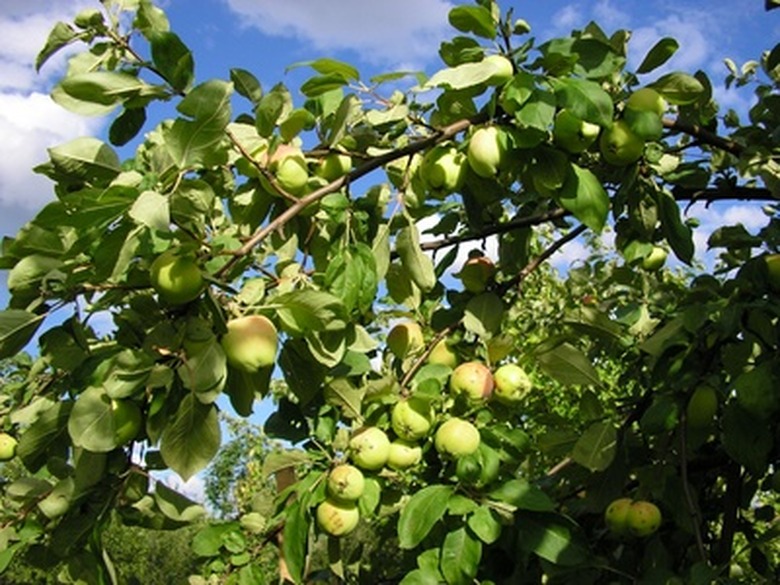How To Care For Fruit Trees With Insects
Things Needed
- Rake
- Lady beetles
- Pheromone traps
- Insecticide
Many gardeners enjoy growing a few selections of fruit trees in their yards or small orchards. These trees enhance the beauty of the landscape in the spring with their attractive blossoms and produce tasty, fresh fruits in the fall. However, people are not the only ones that like to eat from these trees. Insects and pests attack fruit trees. Left to their own devices, these small bugs may reduce the amount of fruit produced and may eventually kill the affected trees.
Step 1
Remove any vegetative debris in the area of your fruit trees. Fallen fruit that rots on the ground draws insects to the area around your healthy trees. Rake up all fallen leaves and fruit to avoid pests, bacteria and mildew. Stressed trees suffer more damage from insects than healthy specimens do. Help your trees fight off destructive pests by keeping them pruned, watering and fertilizing them regularly.
- Many gardeners enjoy growing a few selections of fruit trees in their yards or small orchards.
- Fallen fruit that rots on the ground draws insects to the area around your healthy trees.
Step 2
Examine your trees for evidence of destructive insects. Look for small holes chewed into leaves and bark. Check the underside of leaves for the appearance of small white or dark-colored insect eggs or larvae. Insects can live on your trees throughout the year, hiding beneath the bark during the cold, winter months and emerging to consume leaf buds and blossoms. Use biological controls to remove some types of insects from your fruit trees. Lady beetles, also called Lady bugs, devour small insects, as well as their eggs, without harming your plants. Purchase these through your nursery center or one of the many Internet gardening sources. These are only available at certain times during the year, so put your order in early in the spring. Follow the package instructions when releasing these beneficial bugs into your fruit trees.
- Examine your trees for evidence of destructive insects.
- Follow the package instructions when releasing these beneficial bugs into your fruit trees.
Step 3
Place pheromone traps in your trees to capture many varieties of flying pests and moths, such as tarnished plant bugs, peachtree borers and common fruit flies. Hang these traps as soon as you notice flying bugs eating the leaves and blossoms of your fruit trees. Place a single trap in small trees and two traps in larger trees. The scent emitted by these traps lures bugs inside and traps them there. Change the trap's caps every four weeks to continue catching these bugs.
Step 4
Spray your fruit trees with insecticides as a last resort. These chemical preparations kill beneficial insects and may contaminate the air and water. Select a chemical pesticide specified for use on your particular types of fruit trees. Mix and apply the spray according to the label. Apply these sprays on a calm, dry day. Do not spray on trees with active blooms. Spread the spray evenly over the fruit trees.
- Place pheromone traps in your trees to capture many varieties of flying pests and moths, such as tarnished plant bugs, peachtree borers and common fruit flies.
- These chemical preparations kill beneficial insects and may contaminate the air and water.
